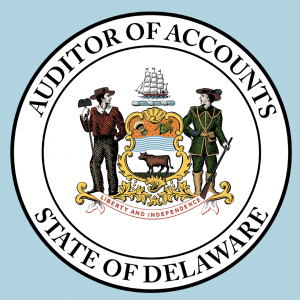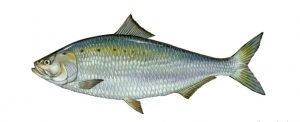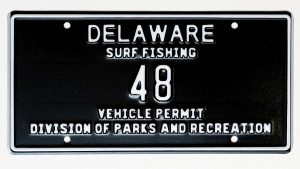Project includes resiliency investments in Mispillion Harbor and coastal impoundment wetlands in wildlife areas
DELAWARE BAYSHORE (June 16, 2014) – Today, Governor Jack Markell, Delaware’s Congressional Delegation of U.S. Sens. Tom Carper and Chris Coons and Congressman John Carney, and DNREC Sec. Collin O’Mara announced that the state has received $6.9 million in federal funding to design and construct projects for Delaware Bay wetland and beach habitats that will minimize coastal flooding and enhance the resiliency of communities and ecosystems degraded by storms, including Hurricane Sandy in 2012. The funding will support Delaware’s efforts to protect lands, infrastructure, and communities along the Bayshore from future coastal storms and sea level rise. The federal grants will leverage state, local and partner funds.
Delaware received funding from the U.S. Department of Interior (DOI) through the Hurricane Sandy Coastal Resiliency appropriations. Earlier today, DOI Secretary Sally Jewell released $102.7 million in recovery funding to support 54 projects along the Atlantic coast. Interior’s commitment of $100 million was matched with $2.7 million from the U.S. Attorney General’s offices in New Jersey and Delaware, as well as donations from Bank of America and Wells Fargo.
“We must address the reality of the increasing frequency of severe storms that have battered our coast and damaged protective tidal marshes and infrastructure,” said Governor Markell. “This funding builds on our efforts to restore coastal resources and increase the resilience of the Delaware Bayshore, while supporting jobs through projects that strengthen local economies. I’m grateful for the tireless work of our Congressional delegation to help advocate for natural resources that are vital to our economy and quality of life.”
Funds awarded to Delaware, made available through a competitive grants program administered by the National Fish and Wildlife Foundation, will increase the resiliency of Bayshore habitats, reduce flood risks to communities and agricultural lands, and prevent catastrophic loss of coastal wetlands to open water. The projects will benefit more than 15,000 acres of tidal marshes and wetlands and more than 3 miles of beach habitat and protect more than 2 miles of navigation channels.
“Over the years, the state and federal government have combined efforts to help mitigate the effects of superstorms,” said U.S. Sen. Tom Carper. “Whether it is creating wide, robust beaches and a strong and healthy dune system, or looking at new ways to build roads to withstand flooding, Delaware is constantly looking at ways to protect our homes, businesses and communities from strong storms. I am confident this funding will help Delaware explore other adaptive measures so when the next major storm strikes, the First State will be prepared.”
“Protecting and restoring Delaware’s wetlands and coastal habitat are incredibly important to maintain our significant and unique natural resources,” said Sen. Coons. “In the wake of Hurricane Sandy, these much needed funds will help a great deal in restoring and repairing Delaware’s vast natural ecosystem and protecting such animals as horseshoe crabs and the imperiled red knot in the Mispillion Harbor Reserve and Milford Neck Conservation Area.”
“The Delaware coastline is a beautiful natural habitat enjoyed by residents and visitors across the region. It’s our responsibility to help protect this resource for future generations to enjoy,” said Congressman Carney. “The federal funding announced today protects central areas of the Delaware Bayshore, the animals and wildlife that rely on it, and surrounding land and residences. It’s essential work so that these parts of our state can be better prepared for the next storm emergency.”
“Improving Delaware’s coastal resiliency and preparedness to storms, sea level rise and other climate impacts is not just essential for wildlife habitat, it’s important for supporting a thriving economy and protecting the health and safety of our residents,” said Delaware Department of Natural Resources and Environmental Control Secretary Collin O’Mara. “I want to commend everyone involved – our Congressional Delegation, Senators Carper and Coons and Congressman Carney – for their help in bringing this important funding to Delaware. I am proud of our DNREC team and the collaborative effort to pursue these funds with partners such as The Nature Conservancy, Delaware Wild Lands, Delmarva Ornithological Society, the National Wildlife Federation and the many communities impacted by coastal storms.”
The Delaware Department of Natural Resources and Environmental Control (DNREC) was awarded two grants totaling $6.5 million that will increase coastal resiliency of Bayshore lands from Mispillion Harbor (near the Town of Slaughter Beach) to Milford Neck Conservation Area and from the Mahon River (near the Town of Little Creek) to the St. Jones River. The central Bayshore area, a major stopover point in the Atlantic Flyway for migratory waterfowl and shorebirds, has been degraded through severe flooding and erosion and no longer provides high quality habitat for migratory birds and other wildlife that are dependent on coastal marshes and wetlands. The degradation of these marshes, surrounding lands and adjacent resources are at risk to more severe flooding, erosion and saltwater intrusion, which has been greatly accelerated by multiple coastal storms in recent years, including Hurricane Sandy.
A grant of $4.5 million will be used for projects that will restore the most vulnerable shorelines in Mispillion Harbor, increase resiliency of important habitat for spawning horseshoe crabs and migratory shorebirds including the Red Knot, and protect the tidal flow and navigation channels of the Mispillion River and Cedar Creek. Restoration and resiliency planned for the harbor will also protect the navigation channel through Mispillion Inlet, ensuring continued commercial and recreational access to the Delaware Bay. Efforts to maintain tidal flow through Mispillion Inlet will complement restoration work at Prime Hook National Wildlife Refuge. Plans to design restoration strategies for Milford Neck marshes will reduce flood risks to adjacent communities, forests and agricultural lands. This project builds upon the success of the Milford Neck Conservation Area Partnership, a coalition that includes DNREC’s Division of Fish and Wildlife, Delaware Wild Lands, and The Nature Conservancy, to conserve and restore lands, waters and habitat.
“This grant will move us well down the road toward demonstrating how natural assets like sand dunes and salt marshes can benefit not just the species that depend on them for habitat, but also Bayshore communities threatened by rising seas, flooding and coastal storms,” said Richie Jones, Delaware State Director for The Nature Conservancy.
“Delaware Wild Lands is pleased to be working with The Nature Conservancy and State of Delaware to protect and restore one of Delaware’s most important tidal marsh and forested wetland complexes located at Milford Neck in Kent County,” said Kate Hackett, executive director of Delaware Wild Lands. “Projects like these are a win for everyone because they weave together multiple sources of funding and take a system-wide approach to restoring and enhancing Delaware’s critical natural resources and the resiliency of our coastal habitat, farmland and communities.”
A second grant of $2 million to DNREC will be used to design and construct restoration projects for coastal wetland impoundments and beach habitat from Ted Harvey Conservation Area north to Port Mahon. These projects will increase the resiliency of habitat and reduce sea level rise and flooding vulnerabilities of Kitts Hummock, Pickering Beach, the Town of Little Creek and more than 1,300 acres of farmland. Two coastal wetland impoundments at Little Creek Wildlife Area and Ted Harvey Conservation Area will be restored.
A third grant of $400,000 was awarded to the University of Delaware to develop a three-dimensional wetland model for the Bombay Hook National Wildlife Refuge. The project will provide current wetland assessments, help evaluate restoration strategies and predict the long-term sustainability of the marsh.
In addition, the DOI announced today two Northeast regional Hurricane Sandy grants of nearly $1 million that benefit Delaware. One proposal, submitted by the National Wildlife Federation and Audubon Society, was awarded $470,000 to complete a vulnerability and resilience assessment of all coastal wetland impoundments in the Northeast. This regional project will help Delaware coordinate its restoration and resiliency work with neighboring states. The second regional grant awarded to the Northeastern Regional Association of Coastal and Ocean Observing Systems will provide $520,000 to improve storm-related data interpretation for decision-makers.
For more information on the DOI announcement, click here: U.S. Department of Interior press release.









































































